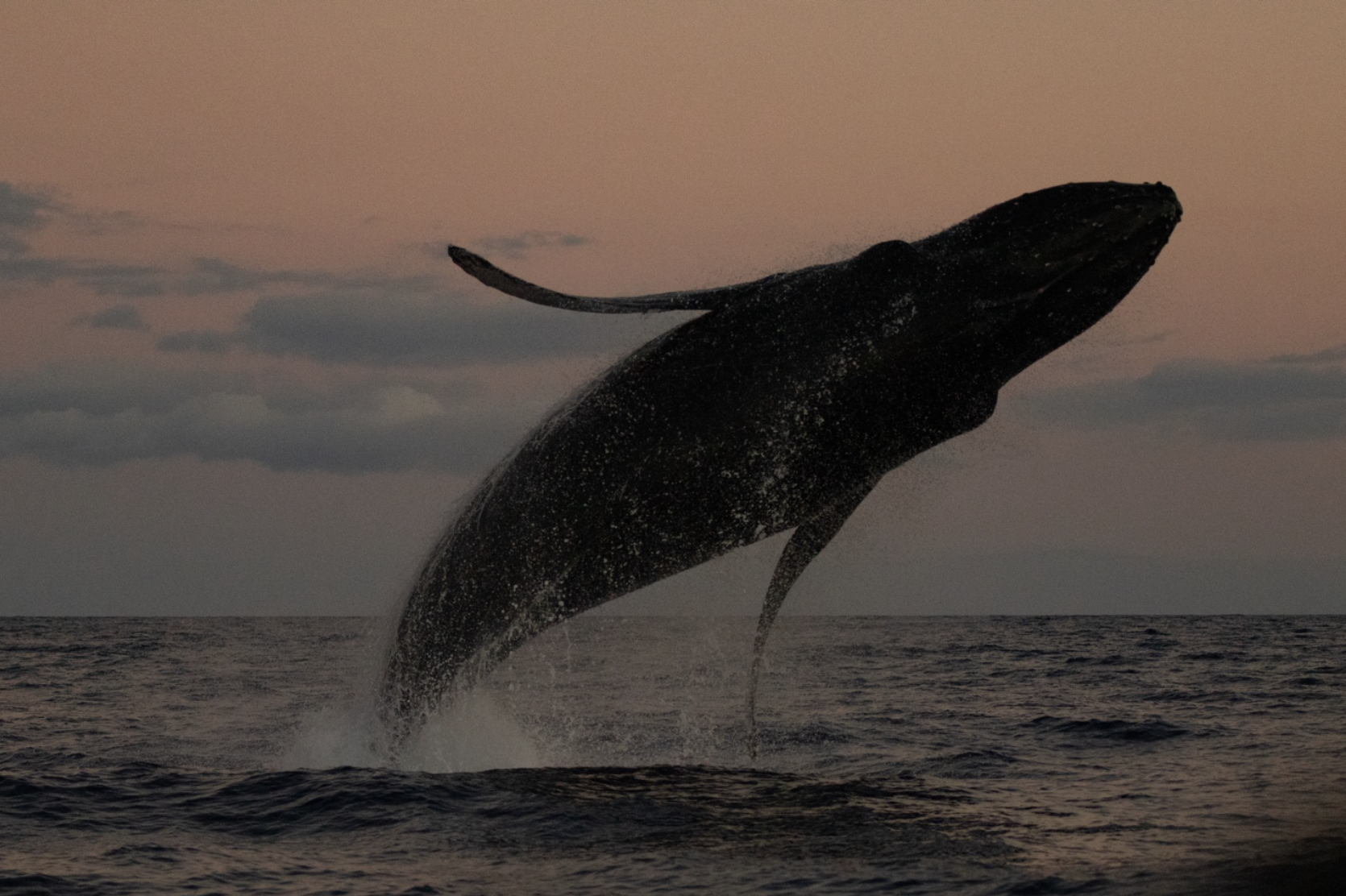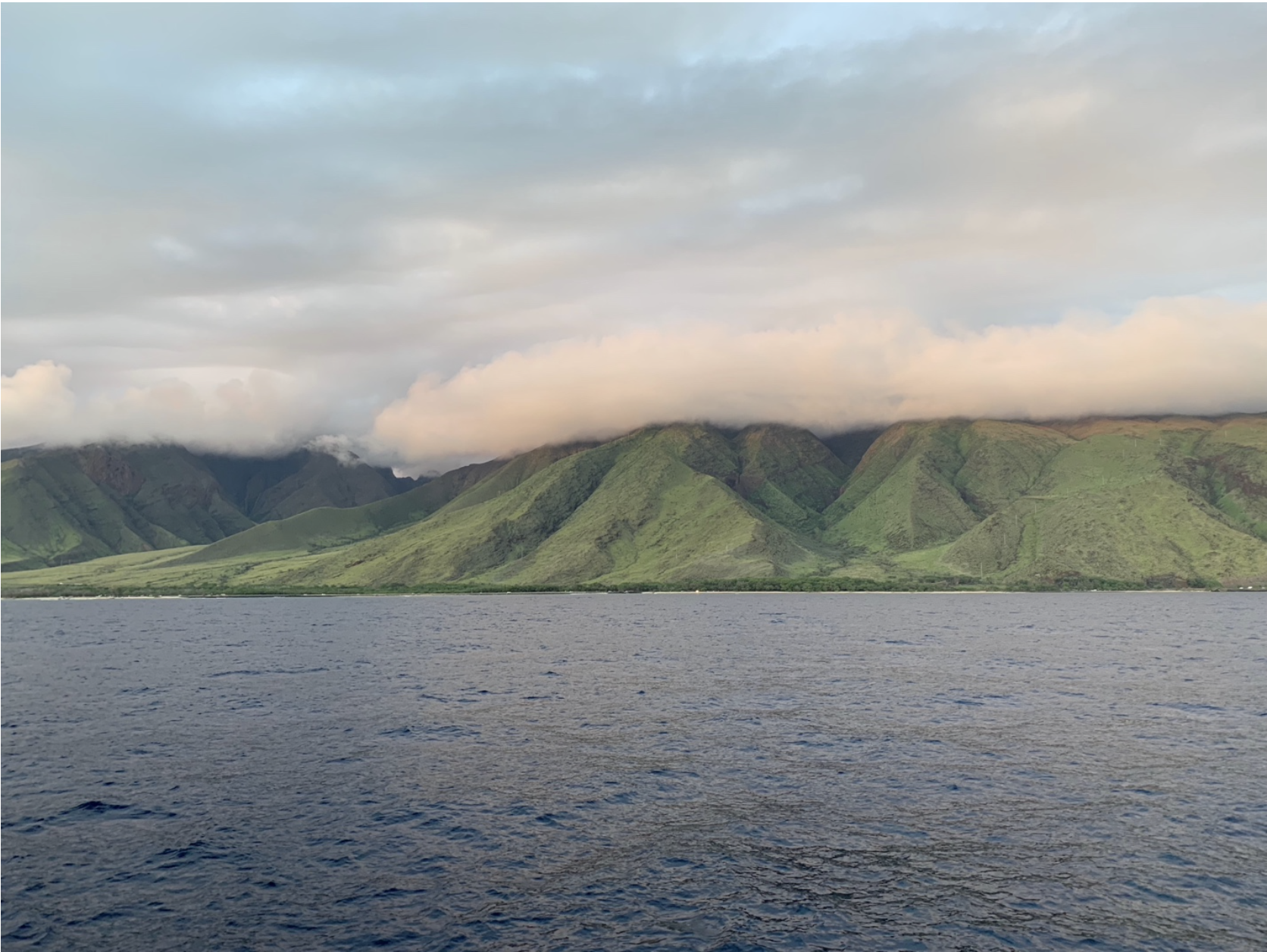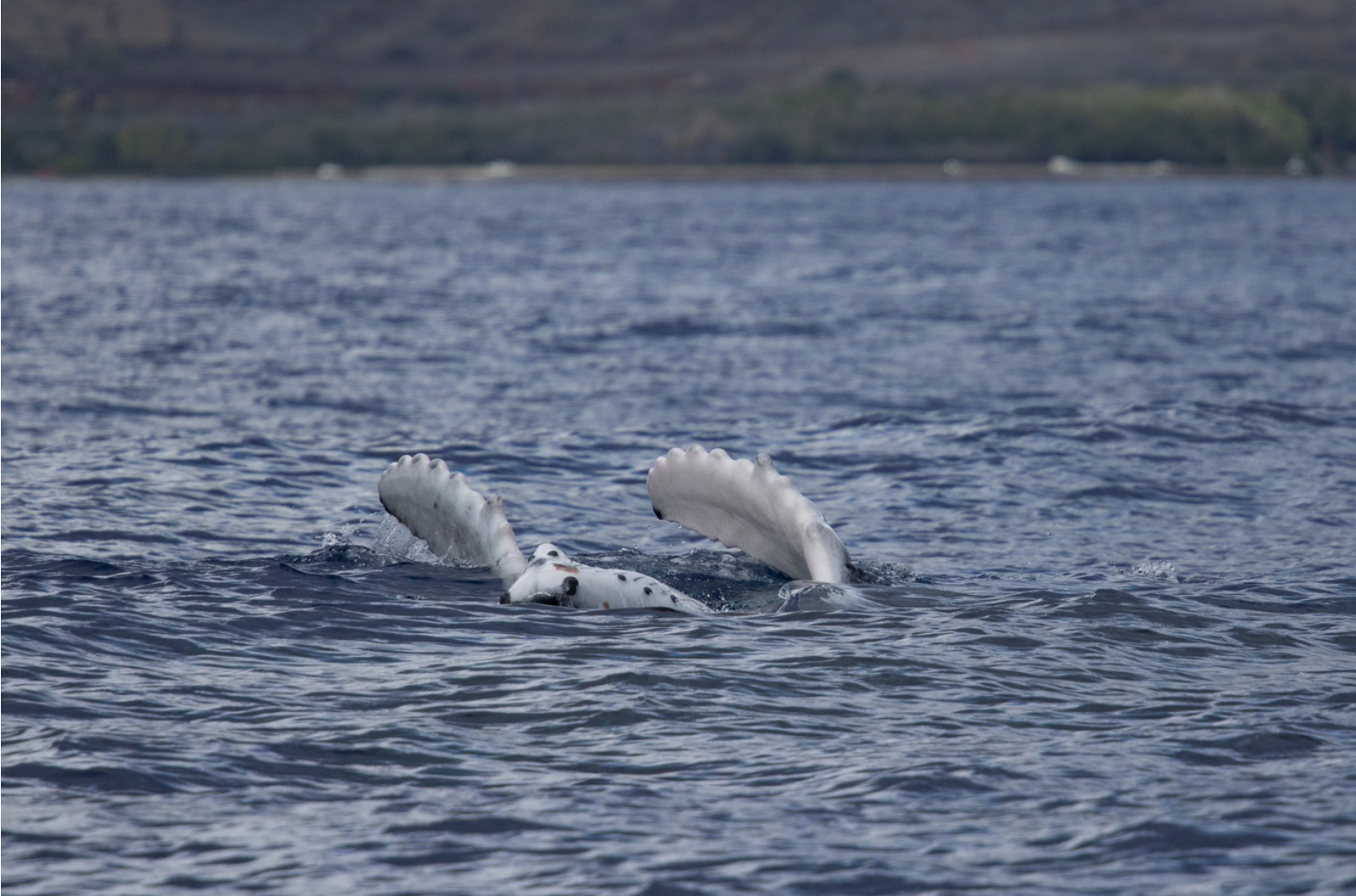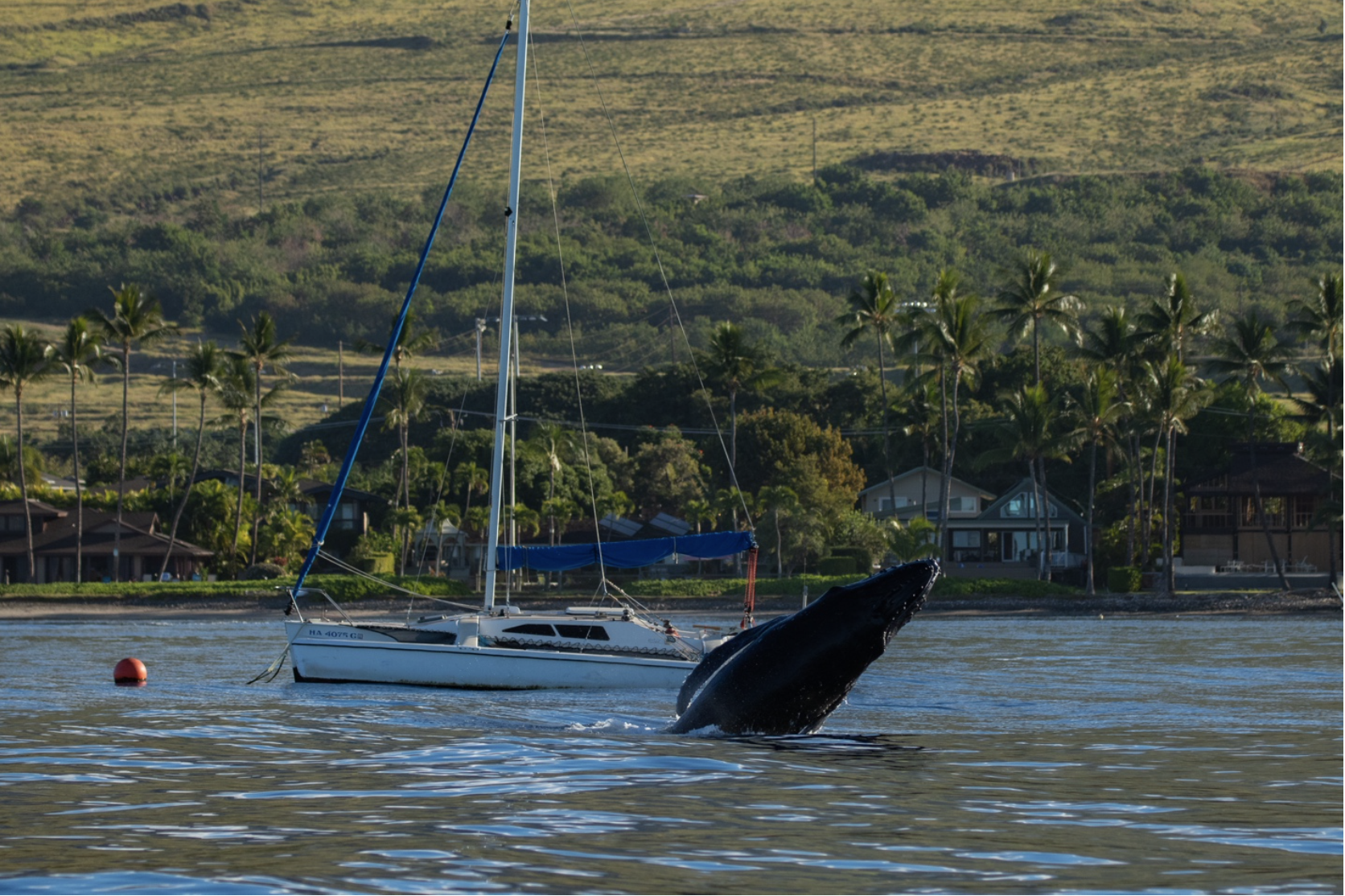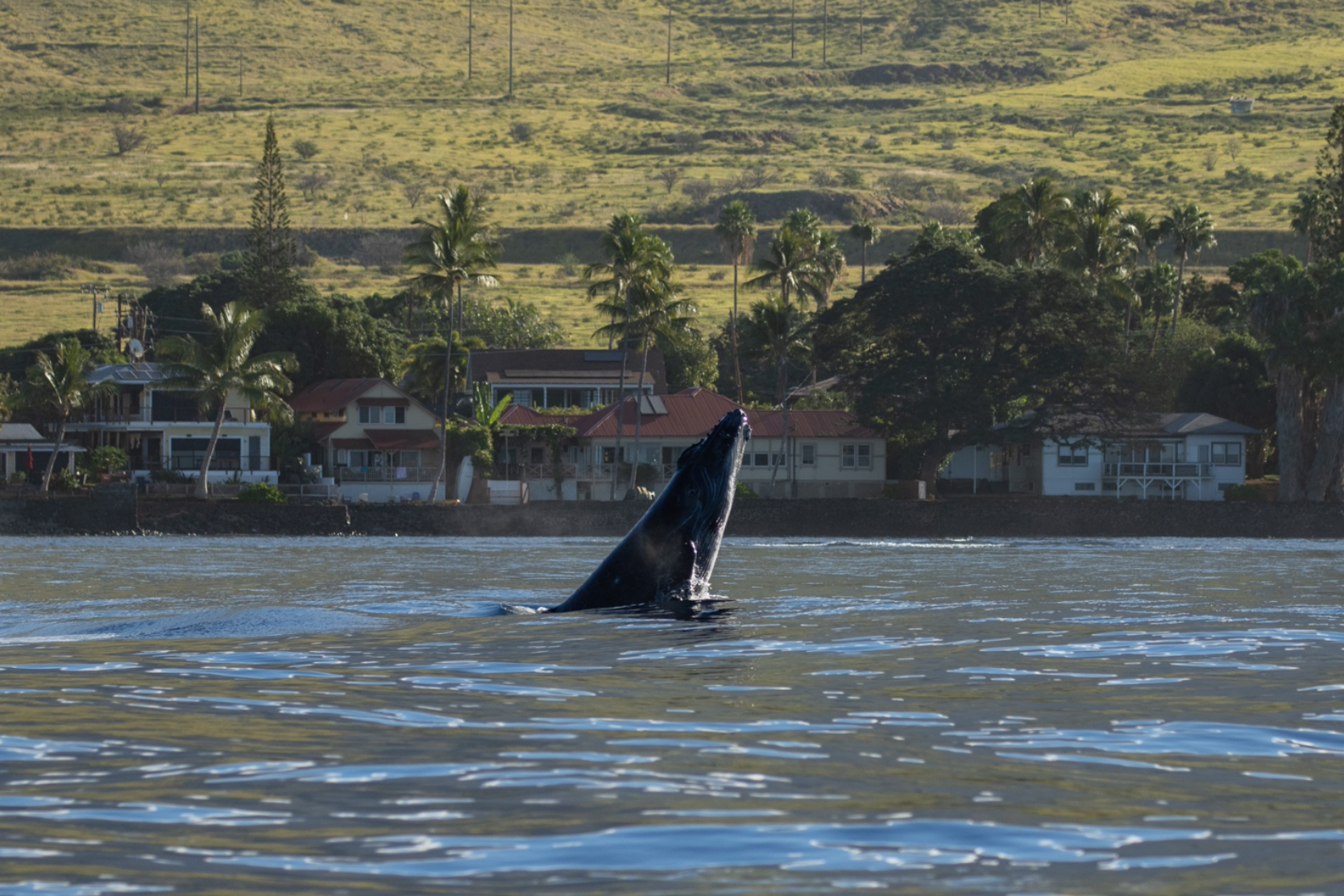Ocean Gardeners
By Katlyn Taylor, Safina Center Junior Fellow
At the end of every year, as the days get shorter, the waters around Hawaii start teeming with life. Humpback whales traverse thousands of miles from the far reaches of the North Pacific to gather in the Hawaiian Islands for breeding, birthing, and to take care of their bodies. It’s a nursery, but it’s also a night club, and it’s a spa. The warm tropical waters provide a sheltered place for young calves to learn to swim and grow big and strong. It’s also a great place to shed old skin and grow new healthy layers without losing so much body heat. You can feel the energy buzz with excitement as whales surface as far as the eye can see.
Humpback whale breaching. Photo by Katlyn Taylor
While the presence of humpbacks alone brings new and exciting energy to the ocean here, the winter rains also bring the slopes of our sleeping volcanoes to life. The hillsides turn green and lush, a vibrant landscape next to bright blue waters. Then the longest nights pass, and each day grows in length again. The ocean becomes an underwater symphony growing louder for months before reaching its peak sometime after the new year.
Photo by Katlyn Taylor
The next generation of humpbacks whales come into the world. It’s adorable to watch them awkwardly swim with their miniature proportions and clumsy maneuvers. With each new whale born, the whole ecosystem benefits. The placenta from the birthing event provides food to marine scavengers after it’s done helping the whale develop. These little whales drink milk from their mother on the order of at least 12 gallons a day of nutrient rich sustenance. While they consume at least 90% of what mom produces, but some escapes into the ecosystem for others to benefit.
Photo by Katlyn Taylor
Photo by Katlyn Taylor
Photo by Katlyn Taylor
Photo by Katlyn Taylor
The adult whales carry an ecosystem with them wherever they go. They have barnacles that make a home on their skin. Lice balance the harmony in the ecosystem for the whale. They keep the whale’s skin clean, especially after an injury. The adults pass these creatures on to their calves so they can grow a community of their own. A variety of fish also visit the whales, either catching a ride, seeking shelter, or grabbing a meal from the whale as they shed their old skin. Zooplankton also eat the skin that the whale loses while enjoying the warm waters of Maui. Some species of zooplankton grow up to become fresh water living adults. The nutrients the whales provide come ashore to nurture freshwater streams in the form of snails and fishes. Land and sea both benefit from the whales. I think of them like gardeners, tending the ocean and fertilizing it.
Photo by Katlyn Taylor
Photo by Katlyn Taylor

